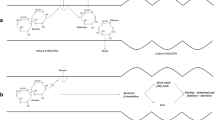Abstract
Lactose (milk sugar) is a fermentable substrate. It can be fermented outside of the body to produce cheeses, yoghurts and acidified milks. It can be fermented within the large intestine in those people who have insufficient expression of lactase enzyme on the intestinal mucosa to ferment this disaccharide to its absorbable, simple hexose sugars: glucose and galactose. In this way, the issues of lactose intolerance and of fermented foods are joined. It is only at the extremes of life, in infancy and old age, in which severe and life-threatening consequences from lactose maldigestion may occur. Fermentation as part of food processing can be used for preservation, for liberation of pre-digested nutrients, or to create ethanolic beverages. Almost all cultures and ethnic groups have developed some typical forms of fermented foods. Lessons from fermentation of non-dairy items may be applicable to fermentation of milk, and vice versa.
Similar content being viewed by others
Author information
Authors and Affiliations
Rights and permissions
About this article
Cite this article
Solomons, N. Fermentation, fermented foods and lactose intolerance. Eur J Clin Nutr 56 (Suppl 4), S50–S55 (2002). https://doi.org/10.1038/sj.ejcn.1601663
Published:
Issue Date:
DOI: https://doi.org/10.1038/sj.ejcn.1601663
- Springer Nature Limited
Keywords
This article is cited by
-
The lipid-lowering effect of once-daily soya drink fortified with phytosterols in normocholesterolaemic Chinese: a double-blind randomized controlled trial
European Journal of Nutrition (2020)
-
Diagnosing lactase deficiency in three breaths
European Journal of Clinical Nutrition (2011)
-
Triple sugar screen breath hydrogen test for sugar intolerance in children with functional abdominal symptoms
Indian Journal of Gastroenterology (2010)
-
The genetic variant of lactase persistence C/T (13910) and blood glucose control in type 1 diabetes mellitus patients
Mediterranean Journal of Nutrition and Metabolism (2009)
-
Enhancement in Ex Vivo Phagocytic Capacity of Peritoneal Leukocytes in Mice by Oral Delivery of Various Lactic-Acid-Producing Bacteria
Current Microbiology (2005)




